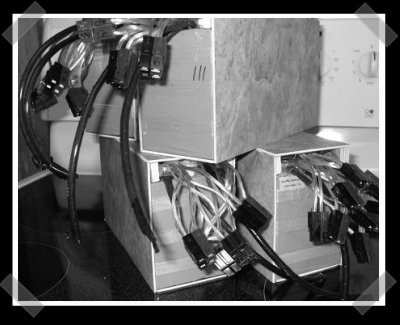
With fuel prices rising, EVs are becoming more an more stylish. This bit of floor tile wrapped hardware is actually a 12 channel battery management system designed to handle Lithium Iron battery packs. It’s designed to take power from a standard lead acid charger and supply the batteries with their maximum charge current. The cost and complexity of the BMS has been a major stumbling block in the past, so it’s interesting to see these come around. If you need more than 12 cells, multiple boards can be used.
8 thoughts on “12 Channel LiFe Battery Management System”
Leave a Reply
Please be kind and respectful to help make the comments section excellent. (Comment Policy)














Lithium Iron? Must be something new. LOL
Yes, lithium iron. No, not terribly new. hence the ‘life’ in the title. li for lithium, fe for iron. a) pay attention to the ongoing developments in battery tech, and b) go and study the periodic table instead of assuming a typo occurred.
li-ion i\is my fav battery for slow drain devices but i still am a fan of ni-cd and wetpack
Google for lifepo4. They’ve been in the works for a few years now. All the benefits of traditional lithium, none of the exploding when punctured. Made of very common materials and completely recyclable. Tricky part is monitoring and charging.
http://www.lionev.com is using lifepo4 batteries to convert factory ford rangers to ev. They also make several kits to convert hybrids to full plug-in electrics for around $4000.
@number2
its not life its LiFe, you should know, right, cuss you know the periodic table
Aaanndd… the all-lowercase CSS bug bites again! I was going to post a comment “I think you mean ‘battery life management’, not ‘life battery management’.
Is it a test — if you’re not running Greasemonkey and capable of writing your own userscript to disable the CSS, you don’t deserve HAD?
Excuse me, but lithium polymer (lifepo4) cells do *not* have all the advantages of lithium ion. Yes, they’re safer, but they also have lower capacity for a given volume. If I’m wrong, please post links to where such cells can be found. For comparison, check out the various cells in the 18650 size (or 4/3 AA). Basically the 18mm dia by 65mm long cylindricals. I find the polymers to be around the same cost, but the max capacities are around half of those of similarly sized ion cells. I’d like to be wrong about this, so please enlighten. -M
LiFepo4 cells have about 25% lower capacity by weight, yes. But they are not nearly as volitile as Li-poly or LiCoO2 cylindricals, or derivatives, and can be re-charged well over 1000 times, in 70% DOD applications over 2000 times. LiCoO2 cells are typically under 80% of original capacity by the 300 charge point. They are very tolerant of abuse conditions that cause thermal runaway and subsequent violent ignition of their Cobalt cousins.